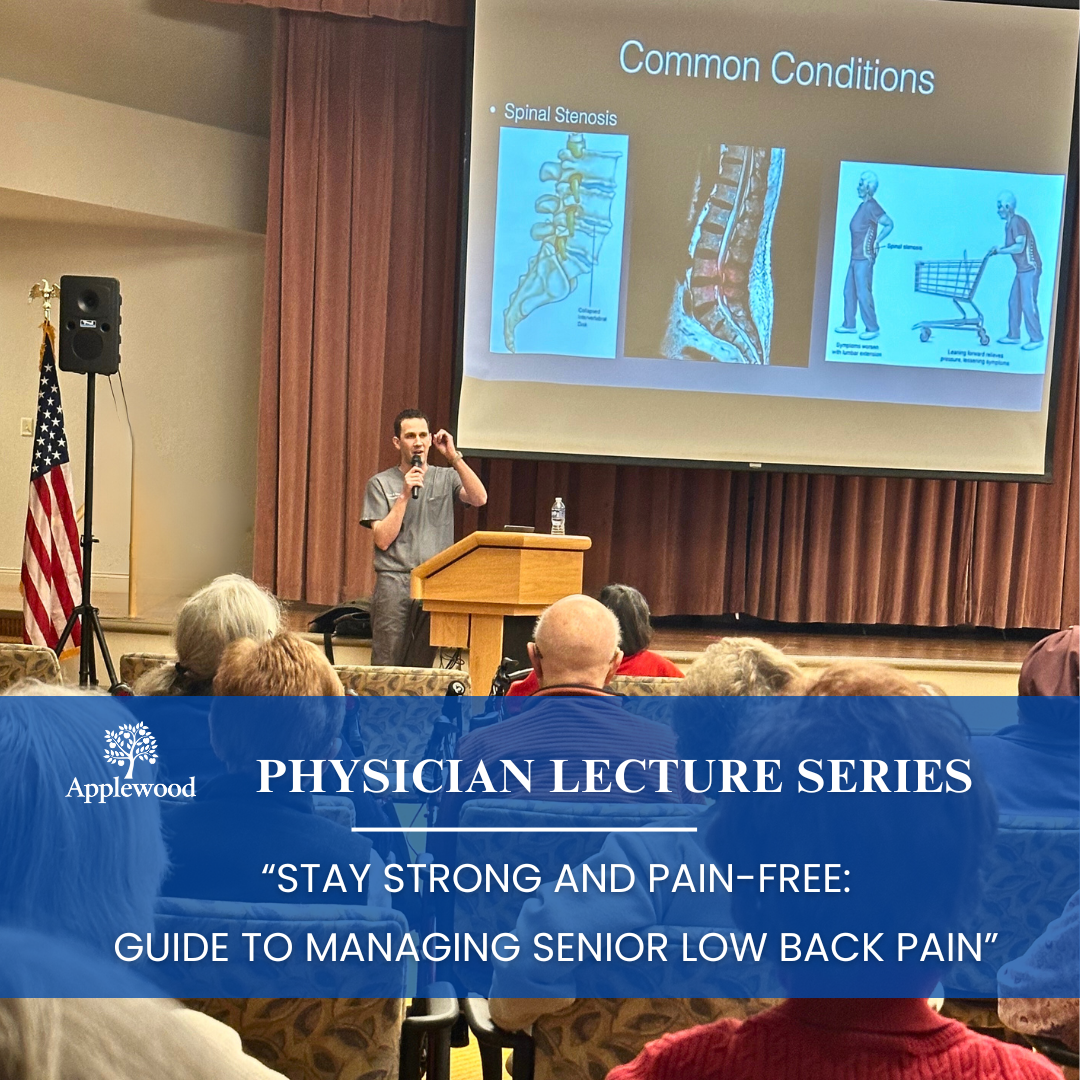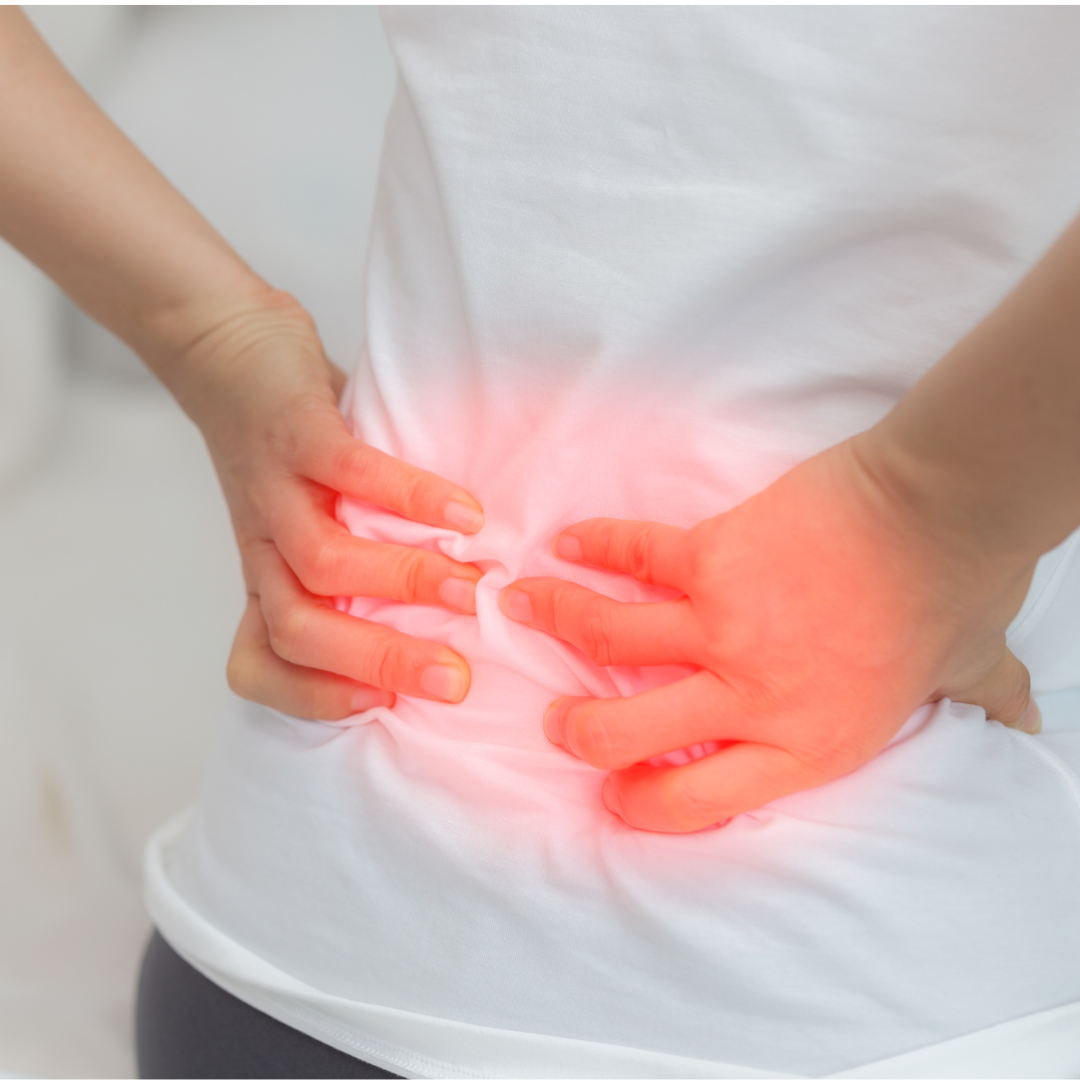Stay Strong & Pain-Free: Managing Senior Low Back Pain

Studies show up to 80% of people over age 65 suffer from low back pain.
This week, Applewood’s Physician Lecture Series presented board-certified orthopedic surgeon Dr. Justin Elkrief from the Advanced Orthopedics Sports Medicine Institute who provided guidance about preventing and treating low back injury and pain in seniors. “While almost everyone experiences low back pain later in life, there are simple steps you can take to prevent and alleviate this common injury,” said Dr. Elkrief, who specializes in spine surgery. His recommendations are outlined below:
Five tools to avoid low back injury

Help to offset a painful back injury by incorporating these five protective measures:
- Maintain a healthy weight
Excess weight can strain your back muscles and contribute to low back pain. Aim for a balanced diet and regular exercise to keep your weight in check.
- Move your body daily
Engage in regular physical activity to keep your back muscles strong and flexible. Take advantage of Applewood’s amenities: indoor swimming, lighted outdoor walking paths, bocce and shuffleboard, tai chi, line dancing and other group fitness classes.
- Practice good posture
“Be mindful of your posture, whether you’re sitting, standing, or lifting heavy objects,“ advises Dr. Elkrief. “Avoid slouching and always bend your knees if you must lift heavy items.”
- Protect your back with supportive footwear
Wearing supportive shoes with cushioned soles can help lessen pressure on your back while walking, exercising or standing for long periods.
- Quit smoking
Surprising but true–smoking can impair blood flow to the spine and decrease the body’s ability to heal, increasing the risk of back pain.
Non-Invasive low back pain treatments

Should you experience acute low back pain, these non-invasive pain management solutions can help ease your discomfort:
A physical therapist can design a customized exercise program to strengthen your back muscles, improve flexibility, and alleviate pain. “You may feel temporary discomfort during therapy, but it will eventually offer more sustained pain relief,” notes Dr. Elkrief.
- Medication
Over-the-counter pain relievers like acetaminophen or ibuprofen can help reduce inflammation and relieve mild to moderate back pain. Consult with your doctor before starting any medication regimen.
- Heat and cold therapy
Applying heat or cold packs to the affected area can help reduce inflammation and alleviate pain. Your back pain management provider can offer specific guidance related to your pain.
- Massage
Gentle massage can help relax tight muscles and improve blood flow to the affected area, providing temporary relief from back pain.
- Injections
For more extreme or sustained back pain, corticosteroid injections may be recommended to reduce inflammation and alleviate severe back pain.
If low back pain persists
“In the event low back pain is not mitigated by these treatment modalities, or the pain has become chronic (six months or more), a surgical spine solution may be warranted,” Dr. Elkrief explains. “Before pain becomes debilitating, consult a board-certified spine surgeon for guidance and advice.”

Don’t let low back pain hold you back from enjoying life. By incorporating these preventive measures and treatment options into your routine, you can reduce the frequency and severity of back pain, allowing you to stay active and independent as you age. Finally, always consult with your healthcare provider before starting any new back pain management treatment regimen.
Learn more about Applewood’s Health & Wellness education and lifestyle experiences: https://applewood.com/lifestyle/health-and-wellness/